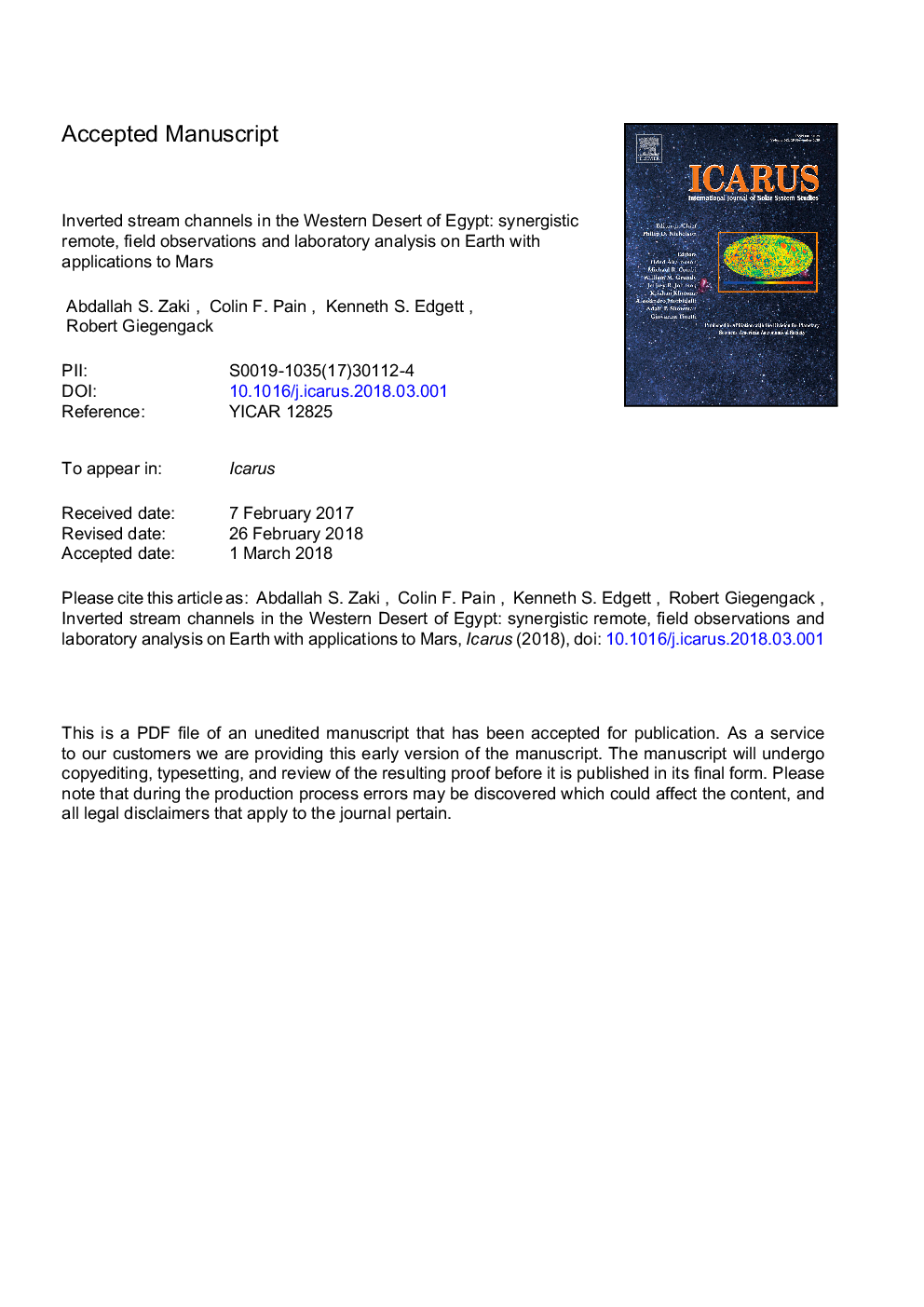| Article ID | Journal | Published Year | Pages | File Type |
|---|---|---|---|---|
| 8134052 | Icarus | 2018 | 50 Pages |
Abstract
Inverted relief landforms occur in numerous regions on Mars, ranging in age from Noachian to more recent Amazonian periods (<3.0 Ga). A better understanding of the conditions in which inverted fluvial channel features on Earth form, and the geologic records they preserve in arid settings, can yield insights into the development of inverted landforms on Mars. Inverted channel landforms in the Western Desert of Egypt are well represented across an area of â¼27,000 km2. We investigated inverted channel features at seven sites using remotely-sensed data, field observations, and lab analysis. Inverted channel features in the Western Desert record fluvial environments of differing scales and ages. They developed mainly via inversion of cemented valley floor sediment, but there is a possibility that inverted fluvial landforms in the Dakhla Depression might have been buried, lithified, and exhumed. A few examples, in the southeastern part of the Western Desert, record, instead, a resistance to erosion caused by surface armouring of uncemented valley floor sediment. We show that the grain-size distribution for investigated and reviewed inverted channels is highly variable, with boulders that are commonly 0.35 - 1 m in size; large particles provide high porosity that influences the cementation mechanism. The studied inverted channel sediments are mainly cemented with ferricrete, calcrete, gypcrete, and silcrete. Inverted channels are valuable for the reconstruction of paleoclimate cycles or episodes on Earth and Mars; observations from the Western Desert, when offered as analogs, add to the growing list of Earth examples that provide suites of observables relevant to reconstruction of paleoenvironmental conditions on Mars.
Keywords
Related Topics
Physical Sciences and Engineering
Earth and Planetary Sciences
Space and Planetary Science
Authors
Abdallah S. Zaki, Colin F. Pain, Kenneth S. Edgett, Robert Giegengack,
